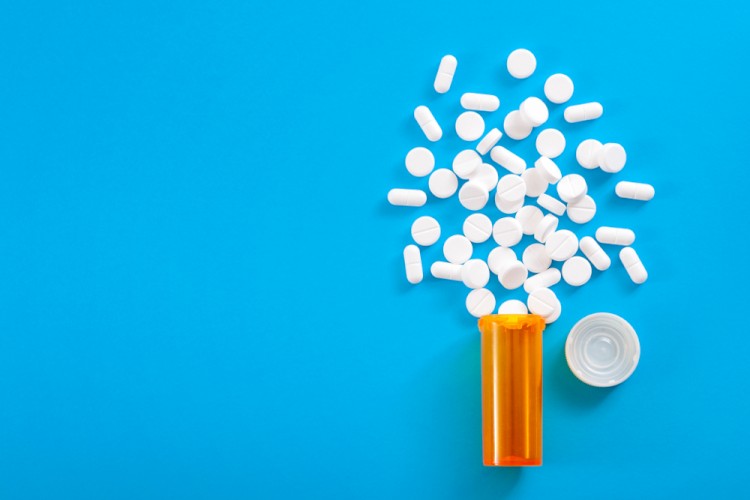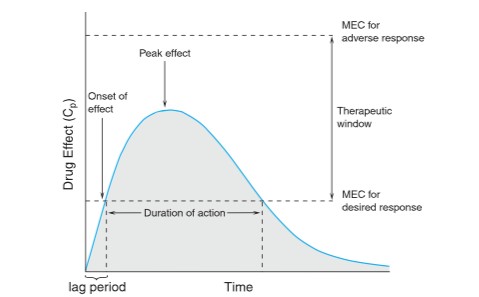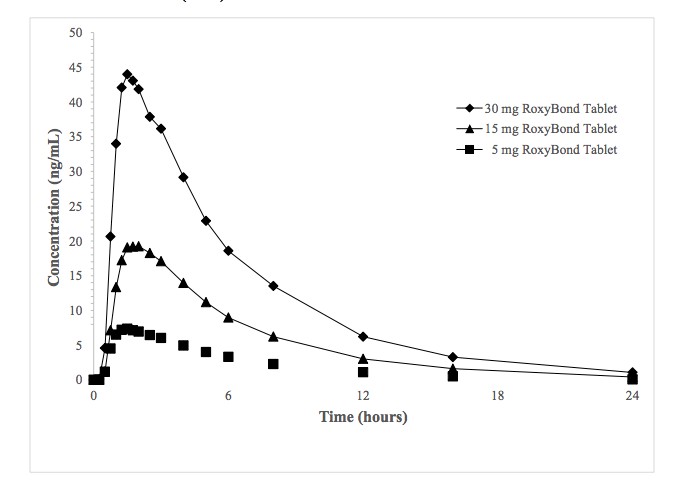john doe asked
Is taking 5mg of oxycodone every 2 hours any worse than 10mg every 4 hours?
At a glance
- Taking 10mg of immediate-release oxycodone every four hours will produce different therapeutic results than taking 5mg every two hours.
Answer

This is a great question to point out some pharmacologic principles as it pertains to drug absorption and metabolism.
For clarity, let's restate the question. You want to know if the following two situations are the same:
- Taking 5mg of oxycodone every 2 hours
- Taking 10mg of oxycodone every 4 hours
These different dosing regimens will likely not produce the same therapeutic results.
Although you are taking the same overall dose every four hours (which would be 10mg), there will likely be a stark difference in terms of how you respond to each of these regimens.
Perhaps the biggest difference is the fact that you will reach much lower maximum plasma concentrations with the lower 5mg dose (even when taken more often).
For immediate-release drugs that have a fairly short duration of action, you need to take a dose that will achieve the desired therapeutic effect.
Say, for example, you are having an allergic reaction to a bee sting, and you decide to take Benadryl to reduce the inflammation and itching associated with it.
It wouldn't make sense to take 1/4 of a tablet every hour instead of taking a whole tablet every four hours. Taking 1/4 tablet likely won't produce the plasma concentrations needed to produce a therapeutic effect.
In general, lower maximum plasma concentration will likely result in a decreased therapeutic response.
This concept is important for drugs that have a short duration of action and are immediate-release, like oxycodone, and Benadryl. Additionally, they are generally taken on an 'as needed' basis and aren't used for around the clock dosing, so won't achieve 'steady-state' concentrations (more on this later).
When around the clock dosing is needed for chronic pain relief, other products, like Oxycontin (extended-release oxycodone), are generally be preferred.
Therapeutic Window
Every drug has a 'therapeutic window', in which the desired therapeutic response occurs (for oxycodone, it would be analgesia).
Going above the therapeutic window, which could happen with doses that are too high, increases the risk side effects.
Going below the therapeutic window, by underdosing, for example, will likely lead to a subtherapeutic response.
This is represented in the chart below:[1]

- Cp = Drug Plasma Concentration
- MEC = Minimum Effective Concentration
So, going back to oxycodone, taking a lower dose will result in lower plasma concentrations, which may put it in the 'subtherapeutic' range for certain individuals, or will just produce less pain-relieving effects.
Oxycodone Plasma Concentrations
Pharmacokinetic studies for oxycodone immediate-release products show that increasing doses produce higher plasma concentrations (which is what we would expect).
The following graph is from the prescribing information for an immediate-release oxycodone product, RoxiBond:[2]

You can clearly see that the 15mg dose of oxycodone produces higher plasma concentrations than a 5mg dose, and 30mg produces higher concentrations still.
Higher concentrations of oxycodone are associated with an increased response to the drug.
Steady-State
It is important to note that we are discussing immediate-release oxycodone, which is intended to be used as an 'as needed' drug. It generally is not intended to be used continuously around the clock.
The concept of maximum plasma concentrations is very applicable to 'as needed' drugs since they aren't continuously dosed.
However, if we are talking about the continuous dosing of the regimens in your question (10mg every four hours vs. 5mg every two hours), they may produce similar results over time.
An important concept in pharmacokinetics is 'steady-state concentration', which is the point at which the rate of drug elimination equals the rate of drug administration.[3] In other words, at a certain point in drug therapy, continuous dosing can result is a plasma concentration that doesn't fluctuate greatly over time. This is illustrated in the graph below:[4]

Attaining the correct steady-state concentrations of a drug can be difficult, but is beneficial (and necessary) for the long-term administration of many drugs.
I bring up 'steady-state' concentrations, because, for oxycodone, nearly identical concentrations can be reached with different dosages.
It is very possible that taking a certain drug, let's say 10mg every 4 hours, could produce similar steady-state concentrations to the same drug taken at a dose of 20mg every 8 hours if dosed consistently over time.
There are so many different factors to consider, however, including changes in absorption, distribution, metabolism and elimination with different dosages and dosing intervals, that you can't assume they will produce the same steady-state concentrations.[5]
Again, steady-state concentrations will only happen when a drug is dosed consistently over time. Since we are talking about immediate-release oxycodone dosed intermittently, it doesn't apply.
Final Words
To reiterate, taking 5mg of oxycodone every 2 hours is not the same as taking 10mg of oxycodone every 4 hours, especially since this drug generally isn't dosed in a consistent manner, but is rather taken 'as needed'.
These two different doses will produce different maximum plasma concentrations.
Even if they were dosed consistently, there are a variety of pharmacokinetic factors that may result in these regimes producing different steady-state concentrations.
References
- ^ Goodman and Gilman's Manual of Pharmacology and Therapeutics, 2e. AccessPharmacy
- ^ Roxibond Prescribing Information. AccessFDA
- ^ The ABCD of clinical pharmacokinetics. PubMed
- ^ Goodman and Gilman's Manual of Pharmacology and Therapeutics, 2e. AccessPharmacy
- ^ Preclinical pharmacokinetics: an approach towards safer and efficacious drugs. PubMed




